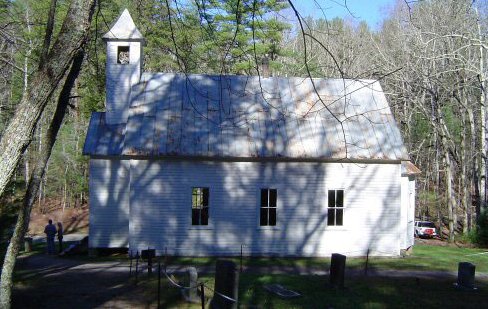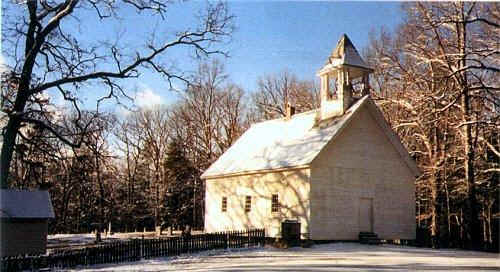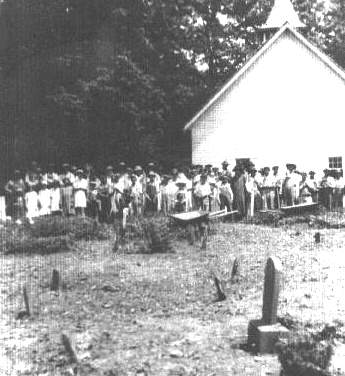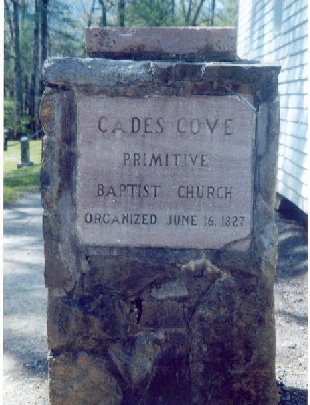William Tipton to John Oliver and Peter Cable for the Baptist Church
Certified November 10, 1836
This Indenture, made the -------- day of October, one thousand eight hundred and thirty six, between William Tipton of the one part and John Oliver and Peter Cable of the other part. Witnessed that the said William Tipton as well for and in consideration of the affection which he, the said William Tipton, hath and beareth unto the said John Oliver and Peter Cable, as also for the better maintenance and support of the gospel (of) the said John Oliver and Peter Cable, hath given, granted, aliened, enfeoffed and confirmed, and by these presents doth give, grant, alien, enfeoff, and confirm unto the said John Oliver and Peter Cable, agents for the Baptist Church, and to the succeeding members of the church, forever, all that piece or parcel of ground lying in Cades Cove on the waters of Abrams Creek on the top of the ridge north east from the place where B. Tipton formerly lived in Cades Cove. Beginning at a small black oak, thence west seventy rods to a stake, thence north to a stake, thence east to a stake, thence south to the beginning, so as to include one half acre of land, the place where the Baptist meeting house now stands in Cades Cove with the appurtenances, unto the said John Oliver and Peter Cable for the use of public worship forever, to have and to hold the said land, tenements and hereditaments with them and every of their appurtenances unto the said John Oliver and Peter Cable and for the use of said church forever, and that I, William Tipton, for himself, his heirs, executors and administrators doth covenant and agree to and with the said John Oliver and Peter Cable and the B. Church by these presents that he, the said William Tipton, his heirs and assigns shall and may at all times hereafter peaceably and quietly have, hold, use, occupy, possess and enjoy the said land tenements and hereditaments with their and all former and other gifts, grants, bargains, sales, -----------, enfeoffments, dowers and estates and of and from and against all former and other titles, charges and incumbrances whatever done or suffered by them, the said John Oliver and Peter Cable, the church or any other person or persons lawfully claiming of, from or under them or any of them. In witness whereof, the said William Tipton hath hereunto set his hand and affixed his seal the day and year above written.
Signed and delivered in the presence of



Will Tipton
A. Henry
Will Sinsleton
State of Tennessee
Blount County
Personally appeared before me, A. Henry, Deputy Clerk of the County Court of Blount County, William Tipton, the within named Bargainor with whom I am personally acquainted, who duly acknowledged the within deed of conveyance to be his act and deed for the purposes therein contained.






 Witness my hand at office in Maryville the
Witness my hand at office in Maryville the






 10th day of November 1836.
10th day of November 1836.
Registered this 20th day of March 1837
by Jas. M. Anderson
Transcribed by Dave Post Feb. 16, 2005


 Source Blount County Warranty Deed Book M 1836-1838
Source Blount County Warranty Deed Book M 1836-1838
The writing of the Blount County Warranty Deed is difficult to distinguish and legal terminology has changed significantly in the ensuing 150 years or so, compounding the transcription difficulty. Punctuation is also "at the beauty and interpretation" of the reader! Nevertheless, the intent of William Tipton's Deed to the Cades Cove Baptist Church is easily discernible. Dave Post




